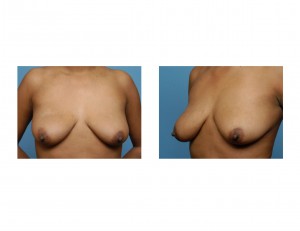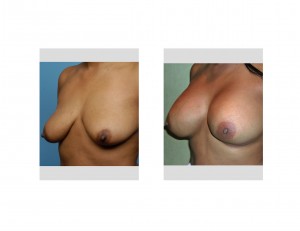Breast augmentation involves two factors, one which is variable and another which is not. The insertion of a breast implant is a fixed factor. While the size of the implant may change, it will exert a push on the overlying tissues which is consistent. The spherical geometry of the implant puts an even force on the skin of the overlying breast. The overlying breast, however, is a variable factor having different amounts of skin, size and position of the nipples, and amount of natural breast tissue.
The variability of the patient’s natural breast tissue is the most significant factor in the outcome of a breast augmentation procedure. The amount of tight or loose breast skin and the associated position of the nipple on the breast mound are very important presurgical considerations. Known as ptosis, the amount of breast sagging determines whether an implant alone is sufficient to achieve the patient’s goal of an upright, nipple-centered, larger breast mound.

While the treatment of ptosis in breast augmentation is usually best managed by some form of a breast lift, many patients are resistant to the scarring that results. This is not an issue in the most severe forms of breast ptosis (Grade III and IV) where the nipple literally points downward to the floor, smaller amounts of breast ptosis make however for a difficult aesthetic decision. The patient must then choose between an unscarred breast augmentation result that appears ‘top heavy’ (nipple positioned more on the bottom side of the breast) or a centered nipple with breast scars from a lift.


Dr. Barry Eppley
Indianapolis, Indiana


